SITE SPECIFIC EVENTS
In reading Spectacle, David Rockwell is trained as an architect, but also finds inspiration from live performances, events, and spectacles. He has insight into gatherings of people to witness these occurrences, and the articulation to express his ideas.
"I began to be intrigued by the shared experiences and the constant disassembling and reassembling of temporary communities that occurs in cities."
This made me think of the places that were utilized in cities for one purpose, and then subverted for another function that developed a secondary infrastructure. One example of this is a Thai market that conducts business on train tracks; vendors systematically fold up their market every time the train makes its way through. The number of vendors and stalls that exist solely on the tracks show a space that operates for a secondary purpose besides for transportation reasons. The state of the market is about temporal intervention, or finding ways to work within a time constraint to make a space their own for their agenda and with a function of their design.
While their use of train tracks for commercial endeavors is probably out of practical necessity, the idea from this example I carry is to reutilize the existing spaces that contain heavy traffic. I'm interested in revealing layers about the city these people live in, as well as influencing new perspectives the public can view their city.
|
Another example is the weekly farmer's markets that one can find in most cities in America. The repurposing of space for another function becomes a choreography ingrained by a system, and its intent is to gather a community of loyal consumers. I wouldn't count the marketplace as a spectacle because of the purpose it serves in the space, but I do appreciate the methods in which a temporary site pops-up for its means.
The New York Times Square experiment is a fixed space that was formally fitted within certain streets, constraints, and probably generated by professional creatives and engineers. Recently, Times Square and Herald Square became closed to traffic allowing Broadway to become a pedestrian mall from 47th to 42nd Sts. and 35th to 33rd Sts. This transformation enhanced community and interaction within the summer months, even creating a common area for people to idle and relax within a busy metropolis.
I wanted to explore transporation hubs where people were already assembled, and work with a specific window of time. However, the examples described differ in the way they were designed–the Thai market built on the tracks were more of an informal and organic community that developed around an existing system. It was generated out of necessity and most likely designed from trial and error.
My thesis research with the intersection is similar to both examples in that it takes already existing pocket of time; however the outcome is to produce some type of visual narrative people could observe either from the sidelines or directly in the middle of it. My intention is to stimulate conversation among pedestrians and local residents, as well as to influence an awareness of what exists in their city's past.
|
THAI MARKET STALLS ON TRAIN TRACKS 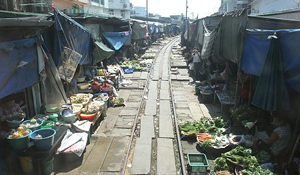
courtesy of www.richardbarrow.com
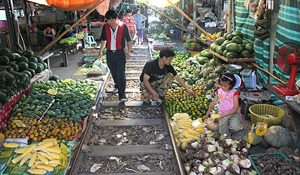
courtesy of www.richardbarrow.com
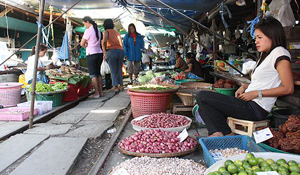
courtesy of www.richardbarrow.com
|
ATWATER FARMER'S MARKET 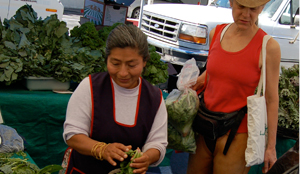
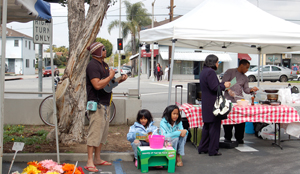
|
NEW YORK TIMES SQUARE
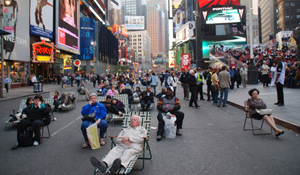
|
|

